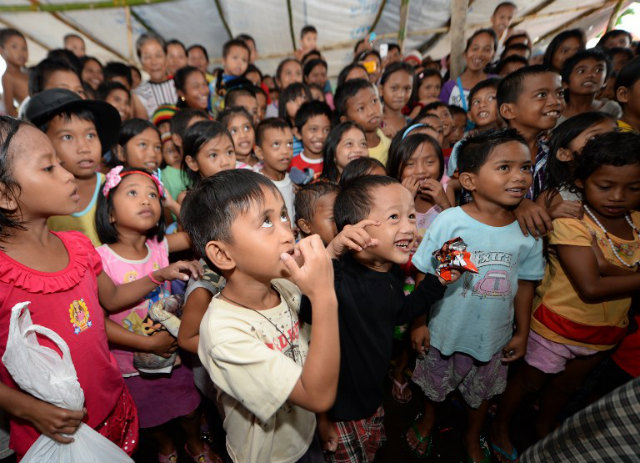SUMMARY
This is AI generated summarization, which may have errors. For context, always refer to the full article.

MANILA, Philippines – Giving a clearer profile of those affected by Super Typhoon Yolanda (Haiyan), the Social Weather Stations (SWS) on Wednesday, January 22, said 7 out of 10 survivors consider themselves “poor.”
(Read: SWS survey: More households poor, hungry at the end of 2013)
Up to 72% of Yolanda survivors rate themselves as poor, the SWS said in its 4th quarter Social Weather Report for 2013.
The pollster said 16% of Yolanda survivors consider themselves on the “borderline,” while 12% of them see themselves as “not poor.”
The SWS said 13% of Filipino families suffered “serious harm” because of Yolanda. Nearly 4 out of 10 of them come from the Visayas.
The SWS said in contrast, 87% of all respondents said Yolanda didn’t seriously affect them.
Among non-victims of Yolanda, 52% of respondents consider themselves poor, 22% on the borderline, and 25% not poor.
‘Food poor’
Through its survey, the SWS also found out that most Yolanda survivors consider themselves “food poor,” or those who claim poverty “based on the type of food eaten” by the family.
The pollster said 58% of Yolanda survivors see themselves as food poor. In contrast, 38% of non-victims view themselves in this category.
Yolanda survivors also experienced the worst forms of hunger in 2013.Among them, 23.9% of respondents reported hunger, in contrast with 17.2% among non-victims.
Up to 4.1% of Yolanda survivors said they experienced “severe hunger” while 19.8% reported “moderate hunger.” Among non-victims, 2.5% reported “severe hunger” and 14.7%, “moderate hunger.”
The SWS survey is nearly consistent with government figures, at least on the number of affected Filipinos.
In its latest update, the National Disaster Risk Reduction and Management Council said Yolanda affected 3.424 million families, or 16.078 million people. That’s around 17.4% of the population.
The government is scrambling to rebuild the lives of affected residents, and will need at least P360.9 billion ($8.17 billion) in a span of 4 years.
The international community has pledged to donate up to P23.798 billion ($538.978 million) in aid, but so far, the Philippines has received only 21.16% of the amount promised. – Rappler.com
Add a comment
How does this make you feel?
There are no comments yet. Add your comment to start the conversation.